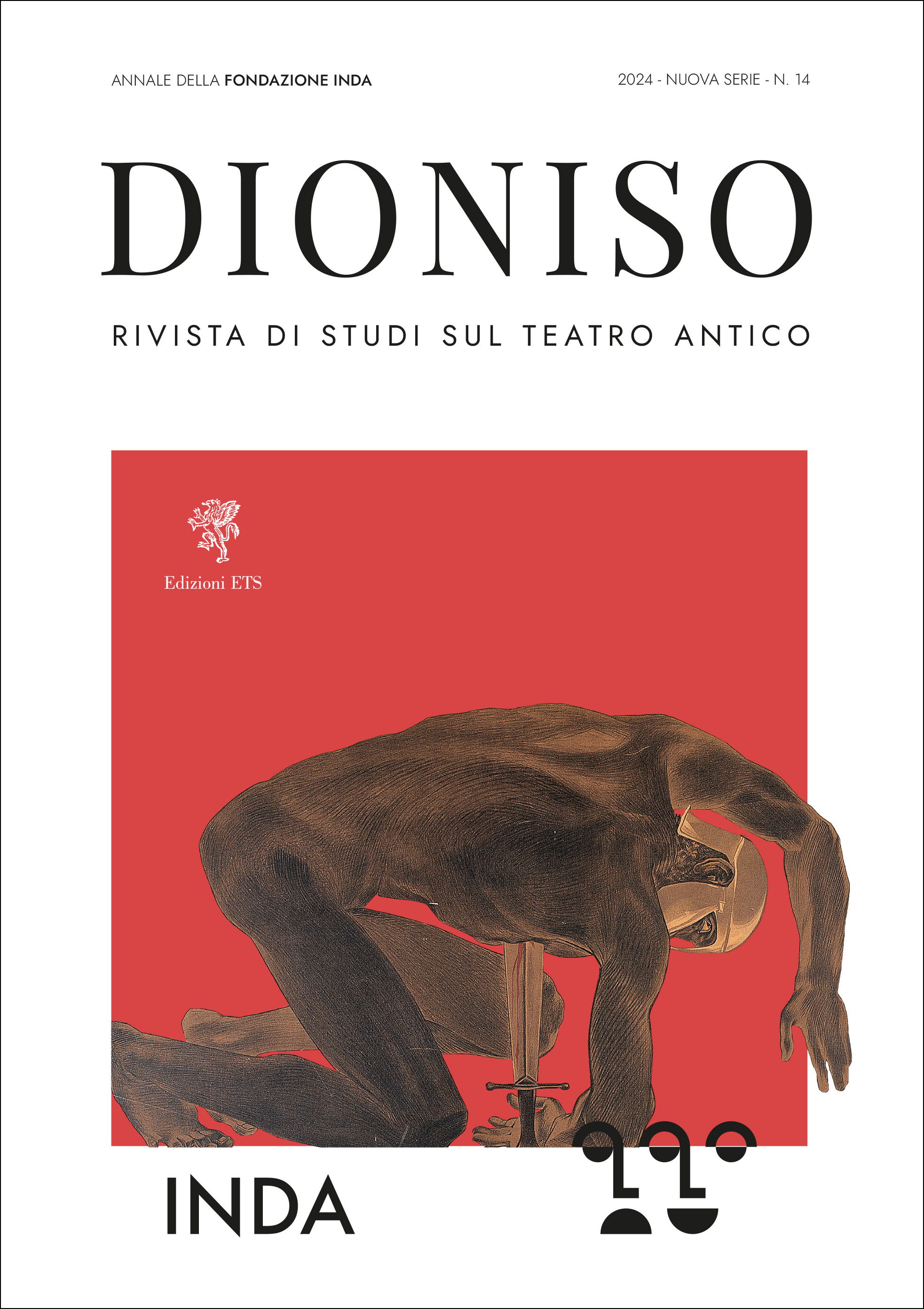Euripides and the Defence of Athens
Male War and Female Sacrifice
DOI:
https://doi.org/10.4454/dioniso.v14.993Keywords:
Euripides, Erechtheus, Erichthonios, Praxithea, Eumolpo, Eleusis, Athena, Poseidon, Aglauros, Hyakinthides Theai, Ion, Creusa, Athens, Acropolis, Erechtheion, Attica, Eleusinian War, Thracians, Tragedy, Myth, Mysteries, Patriotism, Human sacrifice, Suicide, Virgin Triad, Divine DeceptionAbstract
The defence of Athens by king Erechtheus against an invasion led by Eumolpus, son of Poseidon and commander of a Thracian army, was the theme of Euripides’ Erechtheus, staged around 420 BC and preserved only in fragments. In this paper, I suggest that there were two versions of the invasion myth, and that in Erechtheus Euripides made use of both. The poet retains the central idea of the original myth, namely that the city’s salvation was due to a female figure. In the myth it was the altruistic suicide of the parthenos Aglaurus, in the tragedy the decision of queen Praxithea to sacrifice her own daughter. From the more recent version of the myth Euripides draws the combination of the conflict between mortals with one between gods (Poseidon challenges Athena as the patron goddess of the Athenians; Eumolpus’ attack is motivated by his intention to replace Athena with Poseidon). From the recent version of the myth Euripides also takes the motif of the three dead daughters: the suicide of a parthenos, present in the original myth, is extended to the two girls not immolated by Praxithea, and Aglaurus’ heroic motivation is transformed into a sentimental one (the two girls want to follow their dead sister). The heroine Aglaurus serves Euripides as a model for his Praxithea (as saviour of the homeland and as the first priestess, instituted by Athena herself) and for the suicidal sisters.
Staged after the first decade of the Peloponnesian War, therefore, Euripides’ Erechtheus thematises the fact that war – any war – involves everyone, even women, even girls.
Downloads
Published
Issue
Section
License
Copyrights are transferred for five years starting publication date from the author(s) to the Publisher. After this period, the content is released under a Creative Commons licence (Attribution-ShareAlike 4.0 International).


